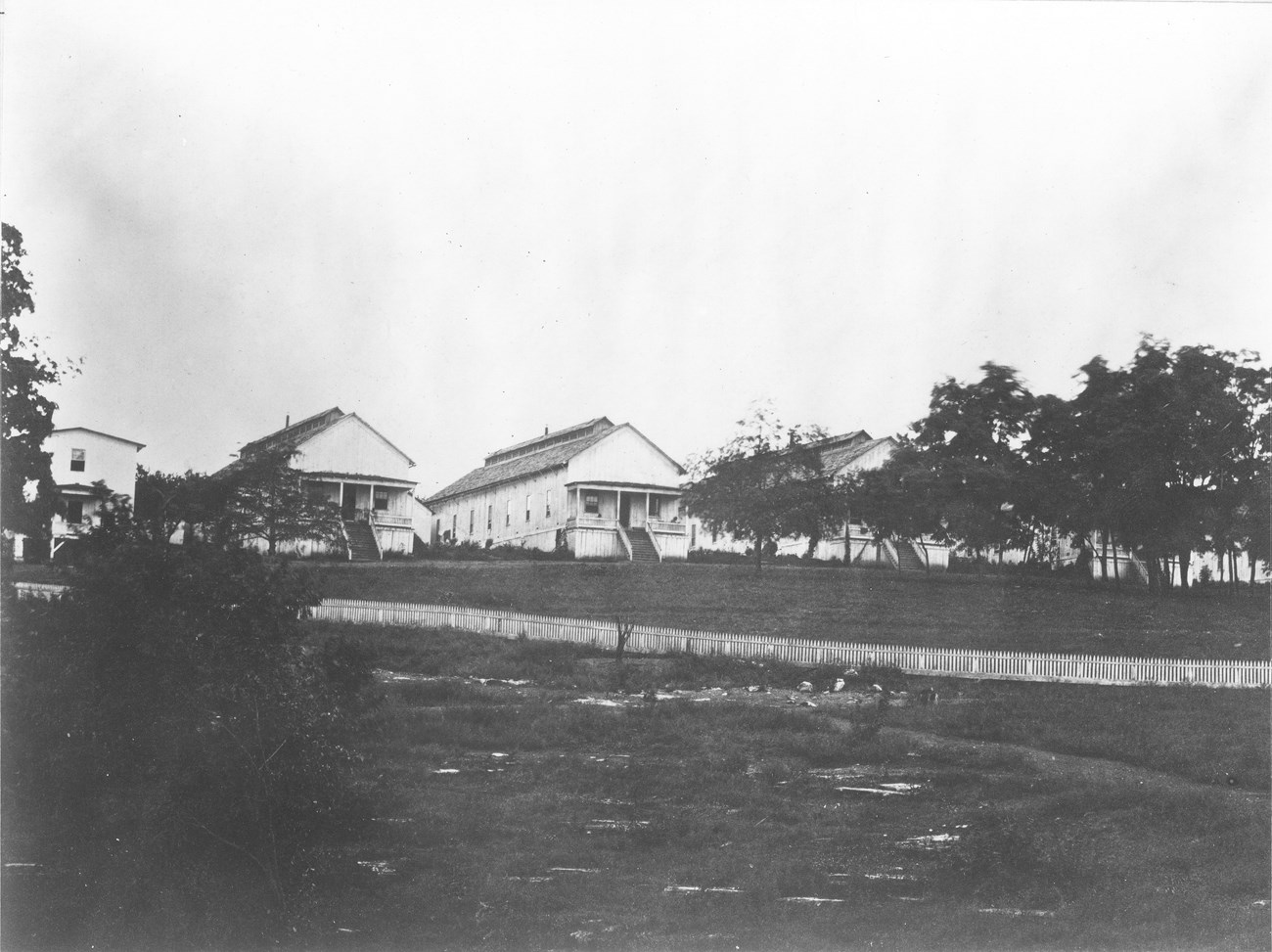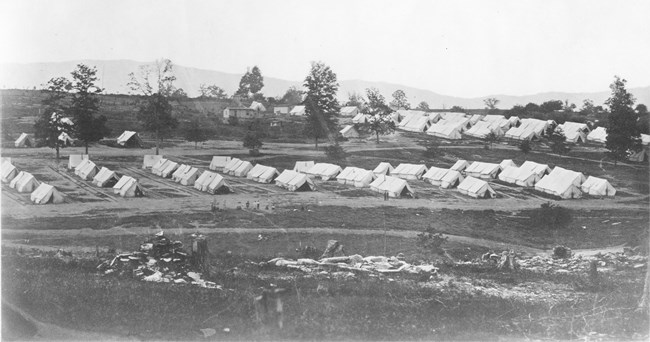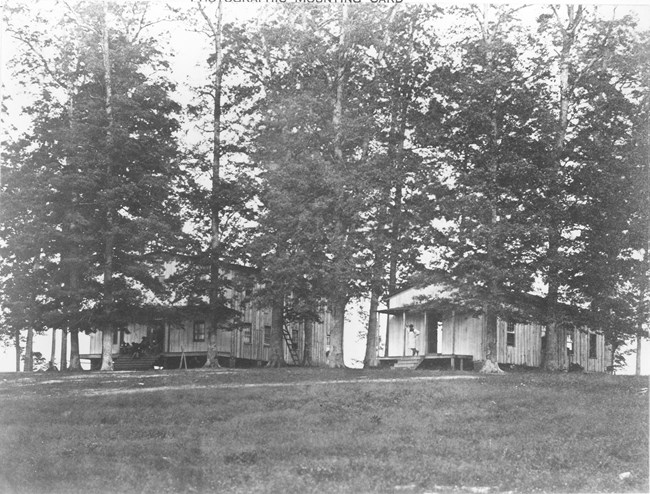
National Archives and Records Administration Medical FacilitiesThis establishment consists of ten large wards – Captain Theron E. Hall, Assistant-Quartermaster, US Army
These Hospitals are situated on a beautiful lawn near the center of Camp, on the side of a hill so as to be entirely protected from the fire of an assailing force. A grove of trees in front imparts to them a pleasant appearance and affords an agreeable retreat for the inmates who are convalescent enough to enjoy such advantages. They are filled up with hot and cold baths in each ward, also with water closets, etc.

National Archives and Records Administration Convalescent CampOne of the medical facilities at Camp Nelson other than the General Hospital was the 76-tent convalescent hospital. During the Civil War, convalescents were soldiers who were no longer suffering from the severe phases of illness or wounds but were still recovering. These troops needed little attention from medical personnel and only required time to rest to fully recover from their affliction and regain the strength to return to active duty. Capt. Hall described the convalescent camp at Camp Nelson: “This Camp received convalescents from the General Hospital previous to their transfer to different Regiments. The men are quartered in tents: the only buildings here being a Dining Room, a Kitchen and Commissary.” 
National Archives and Records Administration Medical TreatmentCamp Nelson may have had a massive hospital complex, but that did not mean that patients received effective medical care. During the Civil War era, there was still little understanding of the real causes of most diseases, and consequently reliable treatment of many illnesses was not known. Germ theory had not yet been discovered, and the importance of hygiene was little understood. For patients in wartime hospitals, it is challenging to judge what was worse, the sickness afflicting them or the so-called treatment that they received for it. Common methods were bloodletting and the administration of drugs and potions such as whiskey, turpentine, opium, mercury, and strychnine, some of which are highly dangerous toxins. |
Last updated: August 4, 2023
